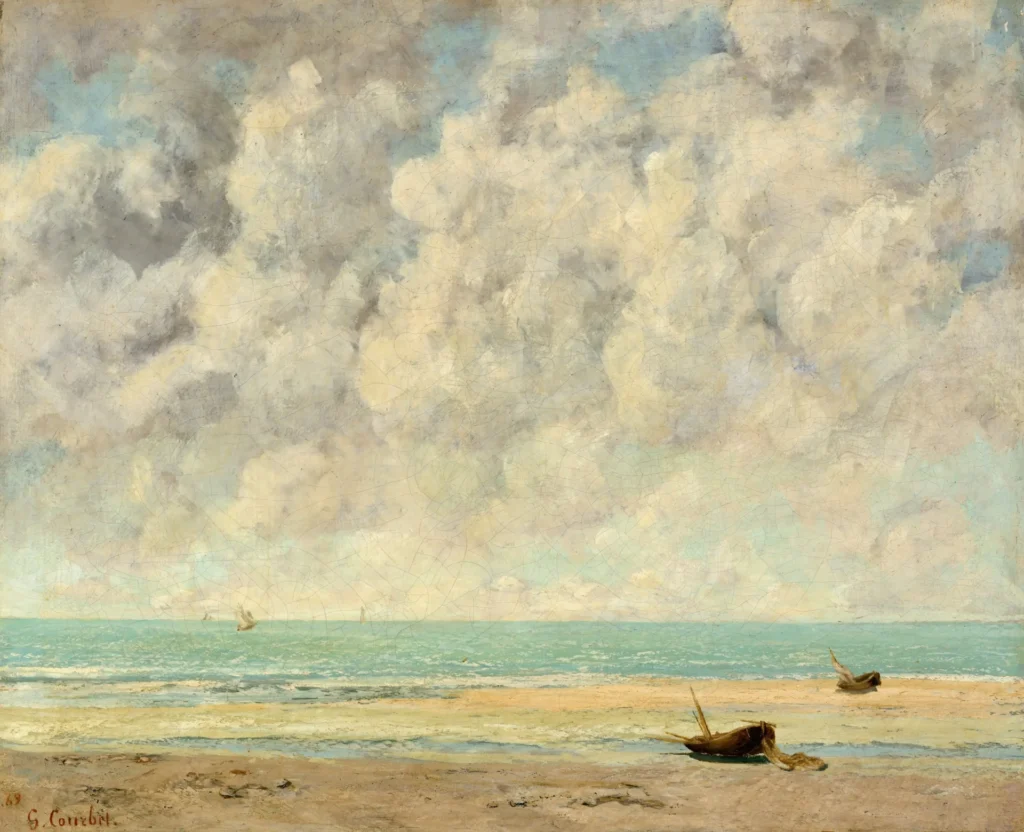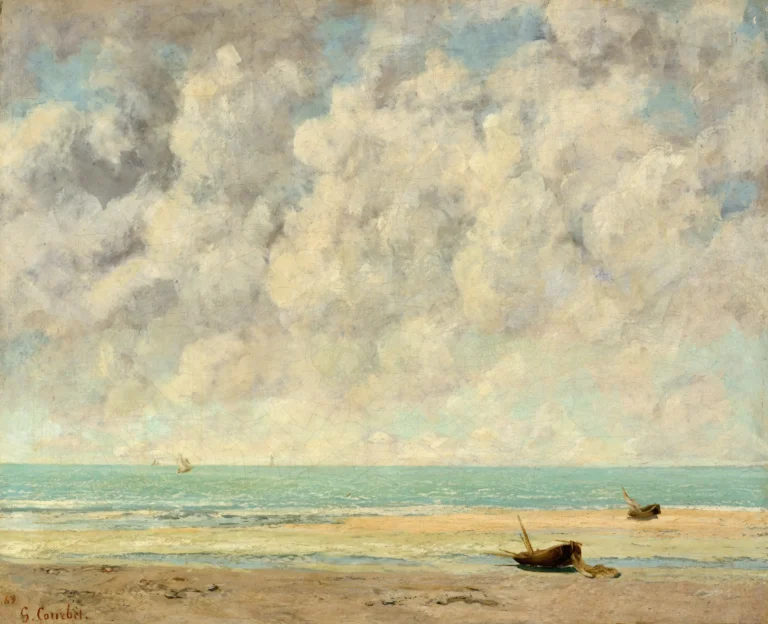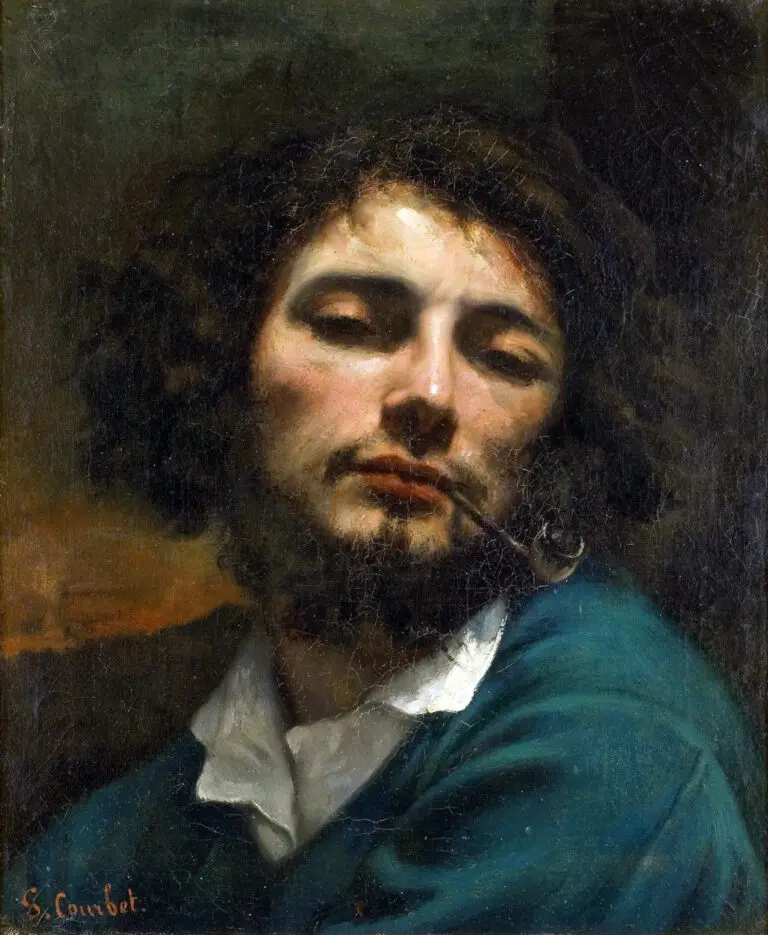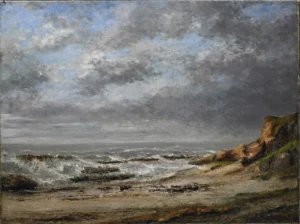The Calm Sea (1869)
The Calm Sea is a stunning seascape painted by Gustave Courbet in 1869, depicting a peaceful beach scene on the Normandy coast. Unlike his usual portrayals of tumultuous waters, this artwork captures the ocean at low tide with two boats resting on the shore, framed by a vast sky that dominates the canvas. Measuring 59.7 cm × 73 cm, this painting embodies Courbet's Realist style, which focuses on genuine observations of everyday life, making it a remarkable piece in both historical and artistic contexts.
Year 1869
About the Artwork
Created during Gustave Courbet's visit to Étretat in August 1869, The Calm Sea represents a significant moment in the artist's exploration of marine themes. Known for his often tumultuous depictions of the sea, Courbet took a more tranquil approach here, reflecting his mood and the serene environment of the Normandy coast. The painting highlights the dramatic interaction between sky, water, and land without the usual chaos associated with maritime scenes. It embodies Courbet's shift towards capturing nature's subdued beauty, illustrating that even within the domain of Realism, artists were finding new ways to express their visions.
Did You Know
Unlike Courbet’s earlier works characterized by drama and turbulence, The Calm Sea showcases a rare display of serenity, highlighting his versatility as an artist.
Courbet painted this work during his visit to Étretat, a picturesque coastal town known for its dramatic cliffs and inspiring seascapes, deeply influencing many artists.
As a pioneer of the Realism movement, Courbet focused on depicting real-life scenes, diverging from romanticized portrayals, which made this painting a significant contribution to 19th-century art.










